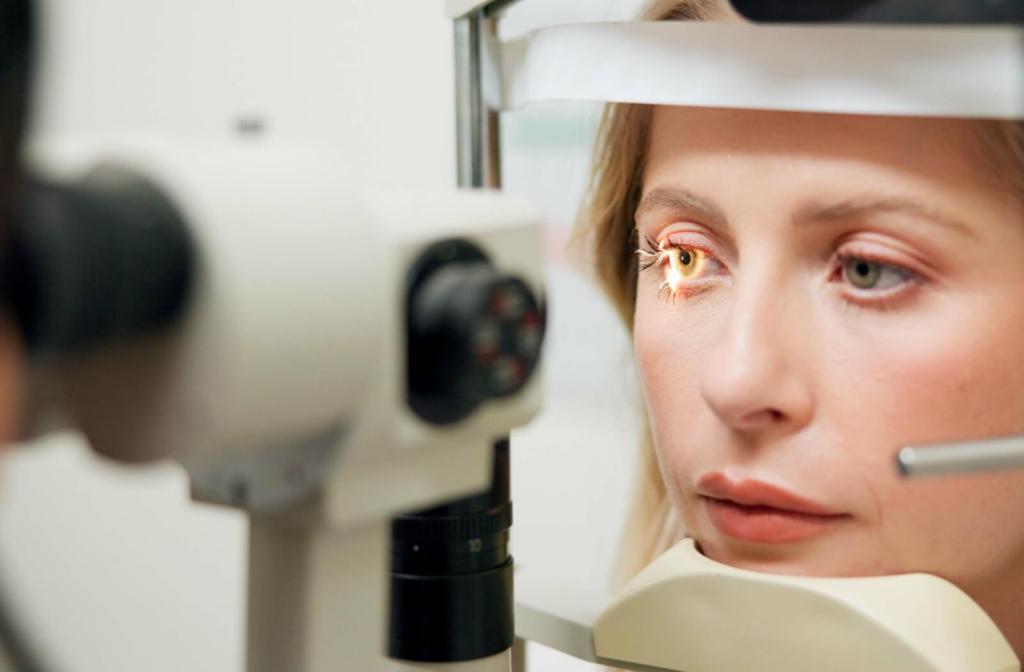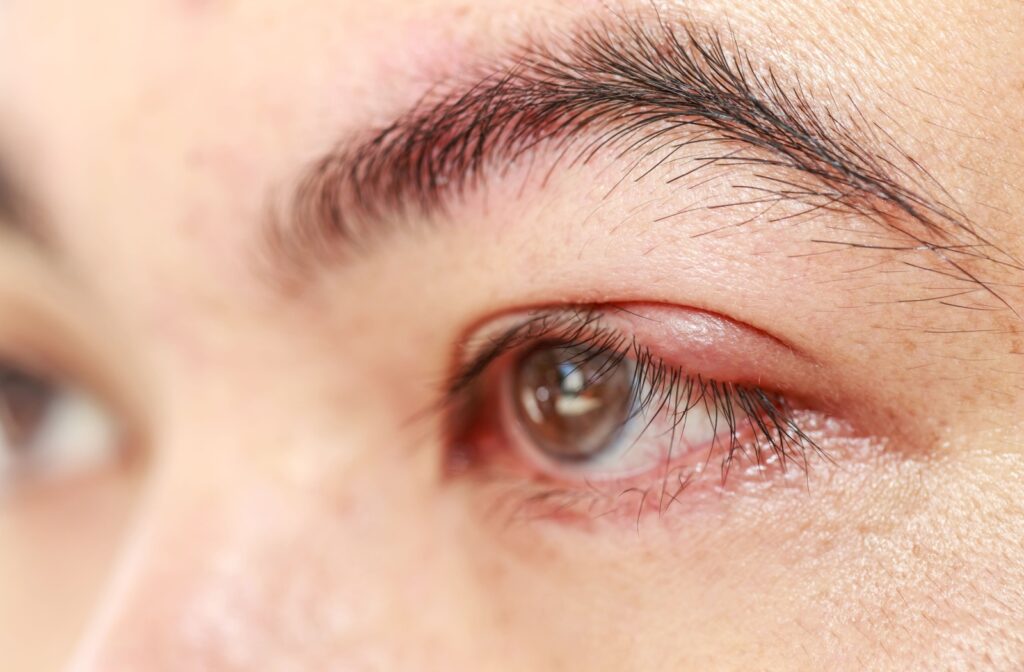If your eyes often feel dry, itchy, or irritated—especially after long hours on digital devices—you’re not alone. A common cause of these symptoms is clogged meibomian glands. These tiny oil glands in your eyelids help keep your eyes moist by preventing your tears from evaporating too quickly. When they become blocked, your eyes can feel uncomfortable and fatigued.
Thankfully, there are simple, effective ways to support your meibomian gland function. With a few consistent habits—like using warm compresses, practicing good eyelid hygiene, and in-clinic treatments—you can help restore comfort and protect your long-term eye health.
What Are Meibomian Glands?
Meibomian glands are the small oil-producing glands located in your upper and lower eyelids, just behind your eyelashes. Their job is to add oil (called meibum) into your tear film. This oil prevents your tears from evaporating too quickly, helping keep your eyes lubricated and feeling comfortable.
When these glands become clogged—a condition known as meibomian gland dysfunction (MGD)—the lack of oil disrupts your tear film. The result? Dry, itchy, or irritated eyes.
Fun Fact: Nature’s Eye Protection
Did you know a camel’s eyelashes can grow up to 10 cm long? It’s nature’s way of shielding their eyes from harsh desert winds and flying debris. While we don’t need lashes quite that dramatic, our eyes do rely on healthy meibomian glands to stay protected and moisturized.
Common Causes of Meibomian Gland Blockages
Several everyday habits and health conditions can contribute to clogged meibomian glands:
- Poor eyelid hygiene: Residual makeup, bacteria, and natural skin oils can accumulate along the lash line.
- Excess screen time: Prolonged use of digital devices can reduce blink frequency, limiting the release of meibum.
- Skin conditions: Issues like rosacea, blepharitis, or seborrheic dermatitis can increase inflammation along the eyelids.
- Aging: Meibomian gland function often declines with age.
- Environmental factors: Dry climates, indoor heating, and air pollution can contribute to ocular dryness and gland blockages.
- Contact lens wear: Long-term wear may disrupt the natural oil flow within the eyelids.
How to Prevent Clogged Meibomian Glands
Preventing future blockages starts with building healthy habits into your daily routine. Here’s what you can do:
- Take regular screen breaks and blink intentionally to help maintain a healthy tear film.
- Keep your eyelids clean—especially if you wear makeup or contact lenses.
- Stay hydrated and maintain a balanced diet that supports eye health.
- Use a humidifier in dry indoor environments to keep the air moist.
- Schedule routine eye exams—even if your vision seems fine—to catch early signs of dry eye or meibomian gland dysfunction.
How to Unclog Meibomian Glands at Home
For many people, relief starts with simple at-home care and lifestyle adjustments. Here are some of the most effective methods to try:
Warm Compresses
A warm compress is one of the easiest ways to loosen hardened oil within the glands and stimulate healthy flow.
How to do it:
- Soak a clean cloth in warm (not hot) water.
- Gently place it over your closed eyelids for 10–15 minutes.
- Repeat twice daily for results.
For added convenience, microwaveable eye masks designed for dry eye relief are available at most pharmacies.
Gentle Eyelid Massage
After using a warm compress, a gentle massage can help express oil from the glands.
How to do it:
- Wash your hands thoroughly.
- Using your fingertip, apply gentle pressure to the base of your eyelid and move along the lash line—upward for the lower lid, downward for the upper lid.
- Avoid rubbing too firmly to prevent irritation.
Eyelid Hygiene
Keeping your eyelid margins clean is essential for preventing future blockages.
Daily care tips:
- Use a hypoallergenic eyelid cleanser or diluted baby shampoo.
- Apply with a clean cotton pad or your fingertip.
- Gently scrub along the lash line, then rinse and pat dry.
Omega-3 Fatty Acids
Adding omega-3s to your diet may help improve the quality of oil your meibomian glands produce.
Good sources include:
- Fatty fish (like salmon and mackerel)
- Flaxseeds, chia seeds, and walnuts
- Omega-3 supplements (ask your optometrist to recommend a trusted brand)
Artificial Tears & Night Ointments
Over-the-counter artificial tears can temporarily relieve dryness by adding moisture to the eye’s surface. At night, a thicker ointment can help protect your eyes while you sleep.
Choose preservative-free options when possible—especially if you use them more than four times a day.

A Complete Approach to Dry Eye
At Advance Eye Care Center, we offer a wide range of dry eye therapies tailored to your individual needs—including BlephEx, punctal plugs, and prescription medications.
There are many reasons your eyes may feel dry, but if you’re experiencing discomfort more often than not, it may be time to seek lasting relief. Dry eye disease is a common, chronic condition that often requires more than just a few eye drops to manage effectively.
Whether you’re dealing with chronic dryness or occasional discomfort, we can help you feel more comfortable every day. Book your dry eye assessment today and take the first step toward clearer, more comfortable vision.





